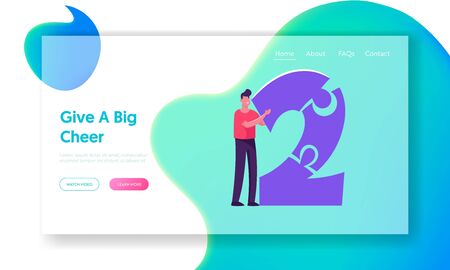Overview of No-Code MVP Tools
Launching a startup in the US is more accessible than ever, thanks to no-code platforms like Bubble, Webflow, and Adalo. These tools have changed the game for entrepreneurs and solo founders who want to build MVPs (Minimum Viable Products) without hiring a team of developers or learning how to code.
No-code platforms offer simple drag-and-drop interfaces, pre-built templates, and integrations with popular services. This means you can turn your ideas into working products quickly—often in just days or weeks instead of months. They’re especially popular among US startups because they allow you to test business ideas, get feedback from real users, and pivot fast if needed—all without breaking the bank.
Why Are No-Code Tools So Popular?
- Speed: Build and launch products faster than traditional development.
- Affordability: Skip expensive developer costs and pricey agencies.
- Flexibility: Make updates and changes on your own schedule, no coding required.
- Accessibility: Open up entrepreneurship to anyone with an idea—not just those with technical skills.
Main Features at a Glance
| No-Code Tool | Main Strength | Best For | Learning Curve |
|---|---|---|---|
| Bubble | Powerful logic & database capabilities | Complex web apps & SaaS MVPs | Moderate |
| Webflow | Design flexibility & CMS features | Marketing sites & custom landing pages | Easy to Moderate |
| Adalo | Mobile app building made simple | No-code mobile apps (iOS/Android) | Easy |
No-Code: The New Normal for Startup MVPs in America
The rise of no-code tools has democratized tech entrepreneurship in the US. Now, anyone can validate an idea, attract early users, and even secure funding before investing heavily in software development. If you’re looking to join the ranks of agile US founders building MVPs fast, exploring Bubble, Webflow, and Adalo is a great place to start.
2. Bubble: Power and Flexibility for Custom Apps
If you need to build a Minimum Viable Product (MVP) with lots of custom features, Bubble is one of the top no-code tools in the U.S. startup scene. Unlike other platforms that focus on simple websites or basic apps, Bubble lets you create web applications with complex logic, database relationships, and unique user experiences—all without writing code.
Why American Startups Love Bubble
Many entrepreneurs in the United States choose Bubble when their MVP needs to go beyond basic forms or static content. Think about SaaS (Software as a Service) platforms, online marketplaces, or any app where users interact in unique ways. Bubble’s drag-and-drop editor and powerful backend logic let founders quickly test ideas and get real feedback from users.
Key Features of Bubble
| Feature | What It Means for You |
|---|---|
| Visual Workflow Builder | Create custom user flows and automate processes easily |
| Database Management | Store and manage complex data structures without coding |
| API Integration | Connect your app to other popular tools like Stripe, Zapier, or Google Maps |
| User Authentication | Set up secure sign-up, login, and user roles out of the box |
| Responsive Design Tools | Ensure your app looks great on both desktop and mobile devices |
Popular Use Cases Among U.S. Startups
- SaaS Platforms: Subscription management, dashboards, analytics tools
- Marketplaces: Connecting buyers and sellers with payment workflows
- Internal Tools: Custom CRMs, project management solutions, inventory systems
The Bottom Line on Bubble’s Flexibility
If your MVP idea involves multi-step processes, conditional logic, or personalized user journeys—like those seen in many American tech startups—Bubble gives you the flexibility to bring those concepts to life fast. With its robust set of features and active community support, you can launch, iterate, and scale your app without hiring a full development team.

3. Webflow: Beautiful and Responsive Websites Made Easy
Webflow has become a go-to choice for founders and creators in the US who want to build visually stunning websites without having to learn how to code. Its main strength lies in its design flexibility and front-end customizability, making it stand out from other no-code platforms like Bubble and Adalo.
Design-First Approach
Unlike some no-code tools that focus on app logic or database management, Webflow puts design front and center. You get a powerful visual editor that feels similar to professional design software like Adobe XD or Figma, but with the added bonus of building a real website as you go. If you care about branding, pixel-perfect layouts, animations, and smooth interactions, Webflow gives you the creative control you need.
Drag-and-Drop Editor
Webflow’s drag-and-drop editor is intuitive and user-friendly. You can easily add elements like text, images, buttons, forms, and videos to your pages. Everything is customizable—from fonts and colors to margins and padding—so you can match your brand’s vibe. Plus, Webflow automatically creates responsive versions of your site for mobile and tablet screens, which is a must-have for today’s users.
Why US Founders Love Webflow
Many American entrepreneurs choose Webflow when they need to launch fast and look professional right out of the gate. Here are a few reasons why:
| Use Case | Why Choose Webflow? |
|---|---|
| Landing Pages | Quickly build high-converting landing pages with modern designs and easy A/B testing. |
| Marketing Sites | Create beautiful marketing websites that tell your brand story with style and polish. |
| Simple Product Launches | Get an MVP in front of customers fast without hiring a developer. |
Customization Without Code
You don’t have to settle for cookie-cutter templates. Webflow lets you start from scratch or customize pre-made designs as much—or as little—as you want. This flexibility is key for standing out in crowded markets.
Who Is Webflow Best For?
If you’re focused on launching a visually impressive website or want full control over your site’s look and feel (without writing any code), Webflow is a top pick. It’s especially popular among designers, marketers, solo founders, and small teams looking for speed and style.
4. Adalo: Fast-Tracking Mobile App Prototyping
When it comes to building MVPs for mobile apps without writing code, Adalo has carved out a strong reputation. If your goal is to launch a native mobile app fast—think iOS or Android—or even a progressive web app (PWA), Adalo makes the process smooth and beginner-friendly.
Key Features of Adalo for Mobile Development
- Drag-and-drop interface: No coding knowledge? No problem. Adalo’s builder lets you piece together screens, navigation, and features visually.
- Native and PWA support: Build once and publish to both the Apple App Store, Google Play Store, or as a progressive web app—great for maximum reach with minimal effort.
- Database integration: Easily set up databases to manage user data, track activity, or store content directly within Adalo.
- Reusable components: Use pre-built elements like forms, lists, and buttons—or create custom components—to speed up development.
- In-app payments: Integrate Stripe for subscriptions or one-time purchases, so you can monetize right from your MVP.
How Fast Can You Go from Idea to App?
If you’re in a hurry to validate your idea with real users, Adalo delivers. Setup is straightforward: sign up, choose a template (or start blank), drag in your features, connect your database, and test instantly on your phone. For many first-time founders and side hustlers in the U.S., this means less time stressing about tech and more time getting feedback from early adopters.
Popular American MVP Use Cases
| Use Case | Description | Why Adalo Works Well |
|---|---|---|
| Fitness Apps | Create workout trackers, meal planners, or community fitness challenges. | No-code forms for logging activities; notifications; easy user management; quick iteration for adding new features based on feedback. |
| Local Services Marketplaces | Connect local service providers (like dog walkers or cleaners) with customers in their area. | User profiles; booking calendars; payment integrations; map/location features—all available as drag-and-drop components. |
| Loyalty & Rewards Programs | Offer digital punch cards or referral rewards for small businesses like coffee shops. | Simple database setup for tracking visits/purchases; push notifications to engage customers; quick updates to offers without redeploying the app. |
| Event Coordination Tools | Plan local meetups, sports leagues, or school events with RSVP tracking and messaging. | Easily build chat features; group messaging; event scheduling modules; invite management—all without custom code. |
Getting Started with Adalo: What to Expect
- No developer required: Launching an MVP is as easy as editing a PowerPoint presentation—drag, drop, customize, and publish.
- Straightforward learning curve: Most users are able to create their first working prototype within a weekend—even if they’ve never built an app before.
- A platform built for mobile: While you can build web apps too, Adalo truly shines when it comes to native mobile experiences Americans are used to on their smartphones every day.
If your vision is a mobile-first product targeting U.S. consumers—whether it’s a next-gen fitness tracker or an on-demand service—Adalo gives you the tools to move quickly from napkin sketch to App Store launch.
5. Which Tool is Right for You? Key Factors to Consider
If you’re building an MVP in the US, choosing between Bubble, Webflow, and Adalo can feel overwhelming. To help you pick the best no-code tool for your startup journey, let’s break down the most important factors: ease of use, scalability, integrations with popular American business tools, pricing, and customer support.
Ease of Use
| Tool | Learning Curve | Best For |
|---|---|---|
| Bubble | Moderate to Steep | Founders comfortable with logic & workflows |
| Webflow | Mild | Designers & marketers wanting pixel-perfect sites |
| Adalo | Easy | Non-tech founders building mobile apps quickly |
Scalability
If your goal is to grow fast or attract US investors, scalability matters. Bubble offers robust backend capabilities—perfect if you expect lots of users. Webflow is ideal for content-rich websites but less suited for complex apps. Adalo works well for basic mobile MVPs but may hit limits as your app grows.
Integrations with American Business Tools
| Tool | Popular US Integrations (Stripe, Zapier, Airtable, Slack) | API Support |
|---|---|---|
| Bubble | Extensive (great API connector) | Yes (custom APIs supported) |
| Webflow | Good (especially with Zapier & Stripe) | Limited (CMS API available) |
| Adalo | Sufficient for basic needs (Zapier, Stripe) | Limited (for advanced features) |
Pricing (as of 2024)
| Tool | Entry-Level Price (USD/month) | Main Cost Triggers |
|---|---|---|
| Bubble | $29+ | User count, database size, advanced features |
| Webflow | $14+ | Site traffic, CMS items, team features |
| Adalo | $36+ | User count, published apps, add-ons |
A Quick Note on Pricing:
Bubbles’ pricing can ramp up if you need more server resources. Webflow’s tiered plans are clear but focus on website features. Adalo’s cost goes up as you add users or publish more apps.
Customer Support and Community in the US Context
- Bubble: Active online forums and a growing US-based user community. Email support can be slow at times unless you’re on higher plans.
- Webflow: Known for responsive customer support and helpful tutorials—especially good for creators who want quick answers.
- Adalo: Smaller but friendly community; solid documentation and email support.
The Bottom Line on Choosing Your No-Code MVP Tool:
If you want maximum flexibility and don’t mind a learning curve, Bubble is great for scalable web apps with lots of integrations. For beautiful marketing websites or lightweight web apps, especially where design matters, Webflow shines. If your goal is a simple mobile MVP without coding headaches—and you plan to launch fast—Adalo might be your best bet.


